Hi there, back in 1990 I was given a Panasonic RF-B40 for my birthday (I think it was my birthday…1990 was a long time ago!). I found that radio to be very sensitive on shortwave, more so perhaps than my Sangean ATS-803A, but ultimately it didn’t really add much value to any serious DXing because it would only tune on shortwave in 5 kHz steps. This rather course tuning arrangement was very limiting in terms of tuning out adjacent noise and copying tropical band – and other signals that weren’t quite on-frequency etc. Frustrated, I lent my RF-B40 to my brother a few years ago and serves me right; following a house move, he managed to lose it! Quite a shame really because almost three decades later, I would have been very interested to put the RF-B40 through it’s paces on a DXpedition or two. You really don’t see them in action very often at all these days.
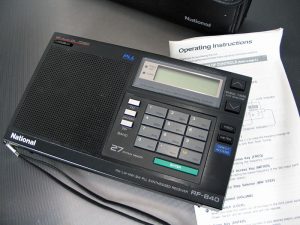
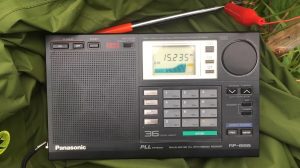 Above: the Panasonic RF-B40 (not mine – unfortunately) and the RF-B60, mid-DXpedition!
Above: the Panasonic RF-B40 (not mine – unfortunately) and the RF-B60, mid-DXpedition!
At that time, which was around the beginning of the 1990s, I read a review somewhere and it became clear that the better receiver was quite obviously the RF-B65. Upon it’s introduction into the market, the RF-B65 was immediately recognised as an excellent receiver, however, in the intervening years it’s reputation has continued to grow to the point today where it enjoys legendary status amongst DXers and bit of a cult following. There’s a lot of information on the RF-B65 to be found on the internet, so I won’t go into huge detail, but the obvious question is: what makes thsi receiver so special? Well, it’s a quite compact PPL double conversion receiver, covering 153 kHz to 29,999 kHz AM and 87.5 to 108 MHz, FM. It has a keypad for direct frequency input, although you have to press either the ‘FREQ’ or ‘METER’ buttons prior to punching in the numbers to define whether you wish to access a particular frequency, or band. I actually find that slightly annoying, but you easily learn to live with such trivial matters when using a radio of this quality and performance.
Furthermore, there’s an electronic signal strength meter, a DX/local attenuation switch, external antenna jack, SSB reception mode, 1 kHz tuning steps on shortwave (unlike it’s little brother the RF-B40) and fine tuning. The single bandwidth filter is 6 kHz wide and thus limits selectivity a little, although the SSB option and fine tune helps offset that somewhat. It would have been nice to have a couple more filtering options, particularly narrower for serious DXing in crowded bands, to combat adjacent channel QRM. Build quality is generally excellent as you would have expected from a high-end Panasonic portable and with a very compact form-factor – roughly the size of a paperback book and weighing in at just 1.4 Ibs, it is eminently more portable than a Sony ICF-SW77 or the iconic ICF-2001D/2010.
Ultimately, the RF-B65 continues to enjoy an excellent reputation today, nearly 30 years after it was introduced because it is a wonderfully sensitive receiver and arguably the best-ever performing shortwave portable in the paperback book size category – often touted as ‘travel portables’. I managed to acquire an example in as-new condition from eBay, although mind you, I paid through the nose for it lol – that cult following ensures prices remain very robust! I have tested my example against the equally legendary Sony ICF-2001D, still considered by many to be the benchmark for shortwave portables, and in my experience the Panasonic is right up there with it. There’s virtually no difference whatsoever in sensitivity. Where the Panasonic comes a little unstuck is the lack of bandwidth filtering and SYNC, leading to lower selectivity. However, clever use of SSB and fine tuning does provide quite good compensation for these shortcomings. Overall though, given it’s size, sensitivity, build quality and audio, as a complete package, in my opinion, the RF-B65 is equal to the ICF-2001D, and this is why today, it remains so highly sought after.
Below are embedded reception videos and text links to the Oxford Shortwave Log YouTube channel, with various DX catches on the RF-B65. Some of these are considered quite rare in Europe, for example EXPPM Radio Educación’s 1 kW signal from Mexico City, the now defunct ABC Northern Territories on 120 metres and Radio Bandeirantes from Sao Paolo, Brazil, amongst others. Please note; right at the bottom of this post is a link to some very recent comparisons with the brilliant Eton Satellit – one of the very best portables currently on the market today. The vintage Panasonic holds its own, despite 30 years of supposed technical innovation in electronics. Thanks for reading/watching/listening and I wish you all great DX.
Click here to view on Oxford Shortwave Log
Click here to view on Oxford Shortwave Log
Click here to view on Oxford Shortwave Log
Click here to view on Oxford Shortwave Log
Click here to view on Oxford Shortwave Log
Click here to view on Oxford Shortwave Log
Click here to view on Oxford Shortwave Log
Click here to view some comparison videos of the RF-B65 and Eton Satellit
Clint Gouveia is the author of this post and a regular contributor to the SWLing Post. Clint actively publishes videos of his shortwave radio excursions on his YouTube channel: Oxford Shortwave Log. Clint is based in Oxfordshire, England.

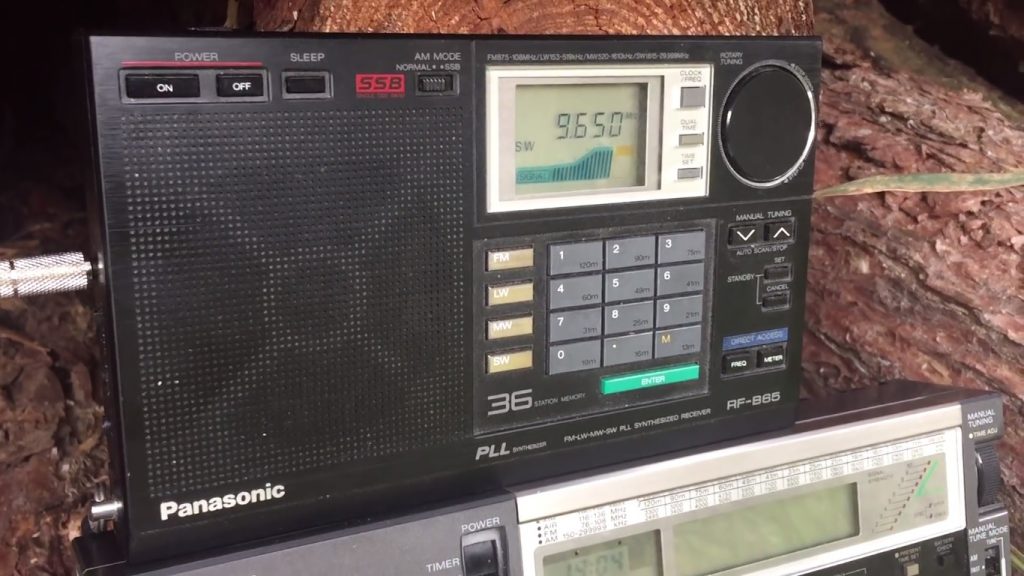
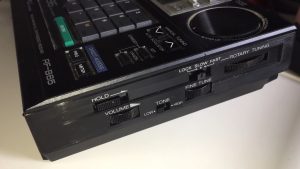
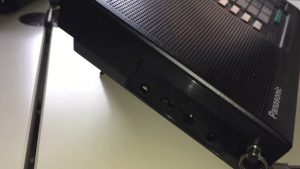
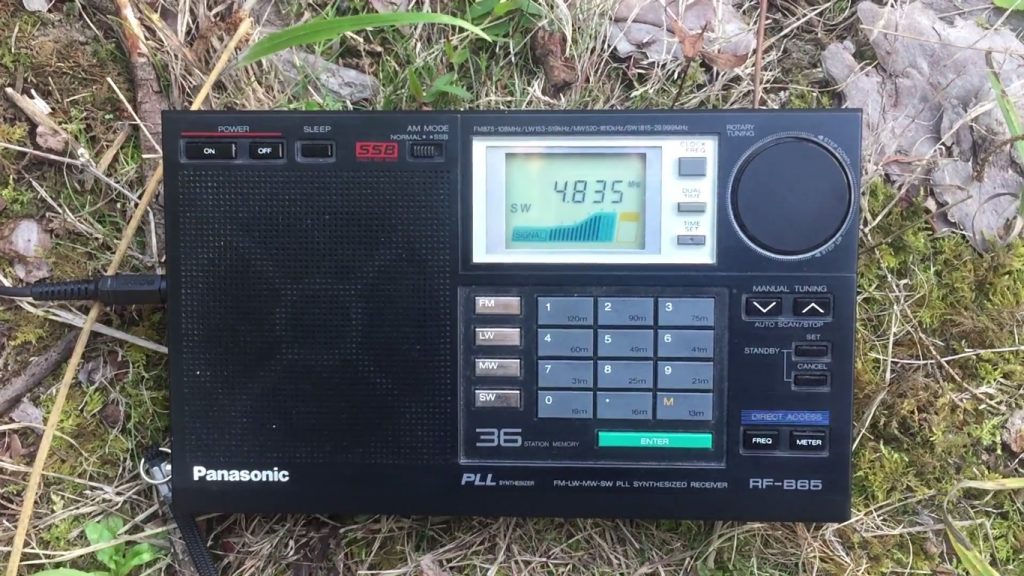
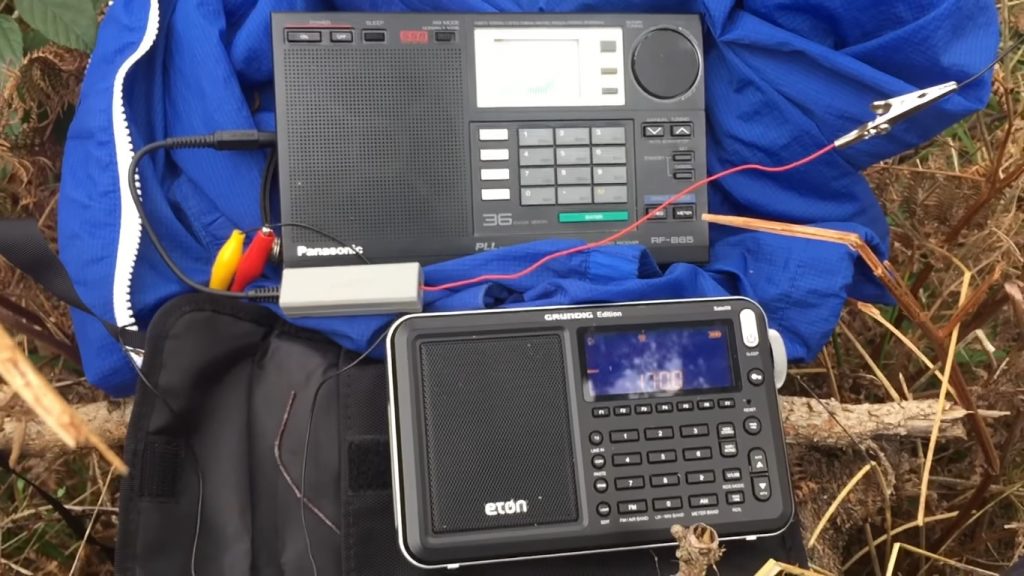
i just received a tecsun pl990x. needless to say i immediately pitted it against my rf b65
on ssb the tecsun performed a bit better
on long and mediumwave as well
but on shortwave the stations just pop out of the rf b65 – for example radio new zealand (18600km from austria) had fuller, crisper audio on the panasonic using the internal telescopic than on the pl990x using my bonito megactiv 305ft
the performance of my rf b65 makes me smile every time
thank you all for these great articles
I need to ask u a question I have asked u before . whaat is your impression on a Grundig 800 radio made in 2001? friend of mine told me his friends father passed and is selling the radio which was his fathers prized possession. would u advise me to get it or do u feel not up to todays radios? what I want is great sw listening and Fm. am is not a biggie to me but will listen but not a game changer. I like listening to other countries. let me no. thanks Paul
HI ALL
IF ANY PERSON HAVE NEW RF B 65 PANASONIC RADIO AWAILABLE..I NEED PERCHASE’..MY WHATSAPP NO–00966578274522–PLEASE CONTECT
25000 ???.
Hi. Thanks once and for all, for a unique, enlightening blog. Is there a way to modify a Panasonic RF 65 without an external antenna jack, to have one? (Thanks to a tricky German Ebay seller, I ended up with one, despite asking many times.) I would’ve sent a direct private message, but…
Thank you for your help.
What is up with the e error? I have had my radio since the Peace Corps, Africa 1991-1994. It worked great then, Now I get the e error, despite the alkaline batteries and the plug in charger. I have cleaned the conectors, jiggled the plug and sought help from a repair source. I would pay to have it working again, I love this radio and the Tecsun I had purchased to replace it is nowhere near as good. Can someone, please help?
Recently I got this E error, too, after switching on my RF-B65 after several years.
The batteries were good. The radio worked with the power adapter.
It turned out that it only was a mechanical problem. One wire had lost contact to the batteries. I do not know how that could happen after so many years.
Repair was not too difficult although the radio had to be put into parts.
Thanks for this deserved eulogy to the RF-B65, Clint.
I adore this radio on bike trips in the summer time. It is best for chasing AM pirates in Europe OUTSIDE, it comes close to the E1 iin this respect and beats all other major portables I know.
I got mine cheap just two years ago, cheap because it was very dirty (cleaned it as good as I could with dry cloth and Q-tips) and it´s only “just” the European version (no external antenna jack, stops at 26100 khz, something which unfortunately does not seem to be easily fixed on the Panasonic).
Recently, mine has developed a SSB turning wheel issue: The SSB wheel goes only with a three seconds delay, and sometimes not at all, and sometimes normal.
This delay or not adjusting at all is weird and harms amateur radio hunting quite a lot and IMO can have nothing to do with bad contacts inside the potentiometer because there is no crackling noise while turning at all, just a weird delay in execution: You turn the wheel, and sometimes, all is fine, sometimes, seconds after only, the SSB tuning is actually adjusted, and sometimes not at all, despite continous wheel turning.
This has come overnight.
Any idea how this could be fixed, please?
It’s not a “Europan” model that stops at 26100 but an Italian one. I have a European RF-B65 that stops at 29999.
While it’s a nice receiver with great sound I think both the RF-B65 and the RF-B60 (which I also have) had birdies on the MW band?
Also it’s a bit heavy for a travel radio. For SW and local MW I would prefer the PL310ET or if working LW and MW performance is needed the Grundig YB 80/Sangean PT 80.
Thanks for clarifying this, Tomas.
And sure, due to its six battieries (two are for clock and memory backup), it is marginally heavier.
Just wish mine hadn´t developed the fine tuning delay. Maybe I´m going to open it and use some contact spray and some general internal cleaning to help fix it, summertime is approaching and so are outdoor biking trips til way after sundown.
Thanks for the review and videos, Clint! I would love a Panny RF-B65, I was convinced of this by Dan Robinson last year at the Winter SWL Fest. If I ever find one for a decent price, I’ll grab it!
Thanks again!
Thomas
And the Panasonic really went through batteries fast.
So for travel I had to have a plug in and voltage changer.
The battery drain killed it as a traveller radio for me.
That was in the days before “rechargables”
The darn radio would EAT batteries, which was really a drag. Also, SSB was a royal pain in the butt to tune. I gave my RF-65B last Christmas to a dear old (Russian) immigrant friend who was sold on America by the VOA broadcasts of jazz by Willis Conover on SW. I hope (Anatoli) likes it, ideosyncrasies not withstanding.